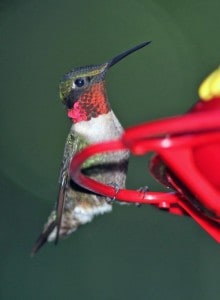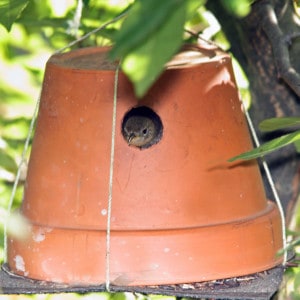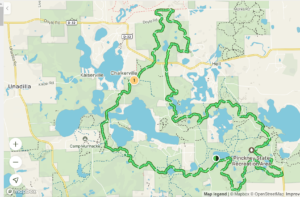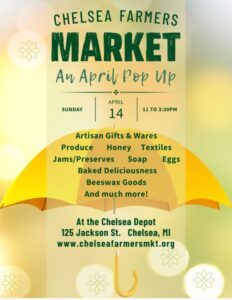
By Jennifer Fairfield, owner of the Garden Mill
(Publisher’s note: part one of this column ran Friday, part two ran Saturday.)
Flowers:
Wait until at least mid-month to plant most annuals in the ground or pots.
Some annuals can stand a light frost, as long as they have been hardened off, but if you really want to be sure, wait until you are planting your tomatoes to plant annual flowers. If you decide to chance it, just be sure to keep row covers handy for nights that are predicted to get below 36°.
Frost can still form at that temperature, especially in low-lying areas. Why? Because air temperatures are usually taken a few feet above the ground, and cold air falls, meaning that the temperature at ground level – where your plants are – is colder.
Using 36° as your cut-off for taking precautions means you are less likely to wake up in the morning to frost-damaged plants.
Most perennials can be planted out any time now, but check with the grower to be sure that they can handle any late frosts we may yet see.
Now is the time to divide and transplant late-summer and fall-blooming perennials that may have outgrown their space. Wait to transplant spring and early-summer bloomers until after they have finished flowering (best to do it in the fall).
Flowering plants can put all their energy into leaf production and putting down roots in their new homes if they are planted when not in bloom. Flowering takes a lot of energy, so you could be stressing your plants out if you ask them to try to get established in a new space at the same time they are trying to put out flowers.
Work compost into the top few layers of soil in your beds, being careful not to disturb roots, and put down a new layer of mulch, once the soil has warmed up, to help keep moisture in and keep soil temps consistent. Don’t put mulch down too early though, or you will keep the soil temperature cooler longer, which can stunt growth.
Also, don’t just pile mulch on top of the stuff that is already there. The likelihood is that last year’s mulch is matted down from the snow over the winter, and piling new mulch on top of that will just add another layer for water and air to have to get through. Use a garden fork to fluff up the existing mulch first, before putting any new mulch down, to give air and water a chance at getting down to the soil, and therefore the roots of your plants.

Trees and shrubs:
I’ve seen lots of forsythia in bloom in the last week or so, which is a sure sign of spring.
Once your forsythia have finished flowering, they can be pruned. If you let them go too long without pruning, forsythia will get very woody and you’ll have leaves and flowers on the ends of long branches, instead of a bushy plant with blooms and leaves throughout. Other spring-blooming shrubs should also be pruned after they have finished blooming.
The University of Minnesota Extension has some good tips for pruning, including lists of what trees and shrubs to prune when.
Plant trees and shrubs now to give them a chance to get acclimated before summer heat sets in. While fall is the best time to plant most trees and shrubs, spring is still a good time, as long as you are diligent about watering. Newly planted trees and shrubs are not as good at taking up water from the soil as those that are established.
Be sure to put down a good layer of mulch when you plant, to help retain water and to keep the soil temperature even throughout the growing season. Just be careful not to mound the mulch up around the tree trunk like a volcano. Doing that can cause all kinds of problems for your trees.
Lawn:
It’s lawn mowing season again.
Keeping your lawn properly mowed is one of the keys to keeping it healthy, especially when we aren’t getting much rain. In general, the grass experts recommend keeping your grass mowed to 3-to-4-inches high, and cutting off no more than one third of the blade each time you mow, which means that the grass should be no higher than five to six inches tall when mowed.
Mowing higher has all kinds of benefits for your lawn, including helping to prevent grub damage, shading out weeds, and retaining moisture during droughts.
If you are seeing large patches of dead grass in your lawn as it greens up this spring, there are a number of possible reasons, and it’s a good idea to figure out the cause before you decide what to do about it.
This article can help with the identification process and also offers tips for solving the problems.

Birds:
With the extended cold weather we had in April, hummingbirds have been slow to make their way to Michigan this year – and who can blame them? The first reported spotting this year of a ruby throated hummer didn’t occur until April 22.
In 2017, we had our first arrival reported on April 9. Now that it’s warming up, you can expect to see them in your yard soon, so get your feeders out and fill them up – you don’t want to miss the show.
Oriole feeders should be put out now as well. Along with nectar, orioles like grape jelly and cut oranges. Giving them a variety of their favorite foods can help convince them to stick around and nest in your yard.
I am frequently asked if orioles only pass through our area on their way somewhere else to nest. The answer is no – they do nest here, but you generally won’t see them at your feeders once the babies are born, because they are busy catching insects to feed to the babies.
However, they may bring the fledged youngsters to your feeders before they head out of town in the late summer, so leave the feeders out, if you want to catch a glimpse of them later in the season.
There’s no need to stop feeding the rest of your birds for the season. While many of them will be primarily eating insects this summer, they will supplement their diet with food you offer, and will also take some back to the babies in their nests.
Don’t forget that you can provide homes for the birds, too.
Bluebirds, wrens, swallows, ducks, woodpeckers, owls, and more will happily take up residence in houses you provide for them. Each type of bird has a different preference for house size and shape, so putting up several types of houses will get you several types of birds.
One more thing for the birds – put out bird baths now, if you took them in for the winter. There’s almost nothing as fun as watching birds in birdbaths. Adding some sort of movement to the water, with a dripper, mister, or wiggler, will attract even more, and has the added benefit of deterring mosquitoes.
Actually, there is still one more thing I should mention for the birds – clean out feeders and baths regularly to help prevent diseases.














